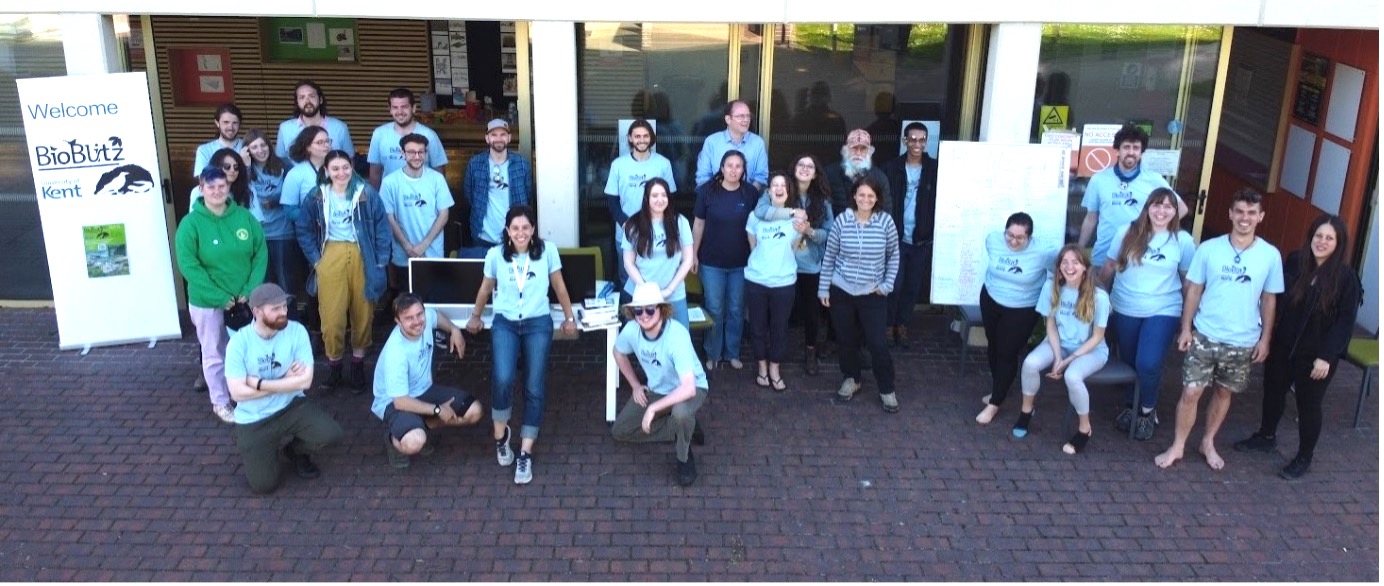Not long out of lockdown, the Sustainability Working Group ran a BioBlitz on campus this summer -an interactive event to record as many living species as possible within a specific area, under a short amount of time. Our amazing campus presents an ideal location and due to the pandemic, with so little human presence here for so long, we knew it was going to get interesting!
Many of us who spend time on campus can appreciate its variety of green spaces, however as yet we have been unable to comprehensively quantify the diversity of plant, animal and other life we share it with. This was until the Sustainability Working Group (SWG) organised and ran the University of Kent’s first ever BioBlitz in May 2021! Not only did we want to record as many species as possible, we also wanted to share our green space with the Canterbury community to improve wellbeing and create a larger connection with nature. Not sure what a BioBlitz is? Check out this article which explains more about the wider BioBlitz network.

What did we find?
We ran over 30 different biodiversity ID events, some of which included bird and bat walks, newt surveys, badger and hedgehog tracking, tree ID-ing and mini-forest bryophyte explorations. We discovered an incredible 245 different species on campus which were mapped accordingly on the University’s campus map. Park wood and Elliot footpath were particularly biodiverse, as seen on the map below.
Some notable species included
- A Yellow-necked mouse which is the rarest of Britain’s 3 mouse species, showing just how healthy and biodiversity rich our greenspaces are.
- A breeding pair of European kestrels.
- A Red-eared Slider which is a non-native species. The impacts of such species in the UK are poorly understood, which is why research MSc student Suzie Simpson has set up the Turtle Tally project, to try and get a better picture of their numbers and potential impact on other wildlife.
- A thriving population of the protected Great crested newts whose striking, dragon-like appearance always make for a memorable sighting.
- Magpie Inkcap fungi which was not expected in May, so it was especially cool to find this distinctive, prettily marked species. Look but don’t touch, however, as this one is poisonous!
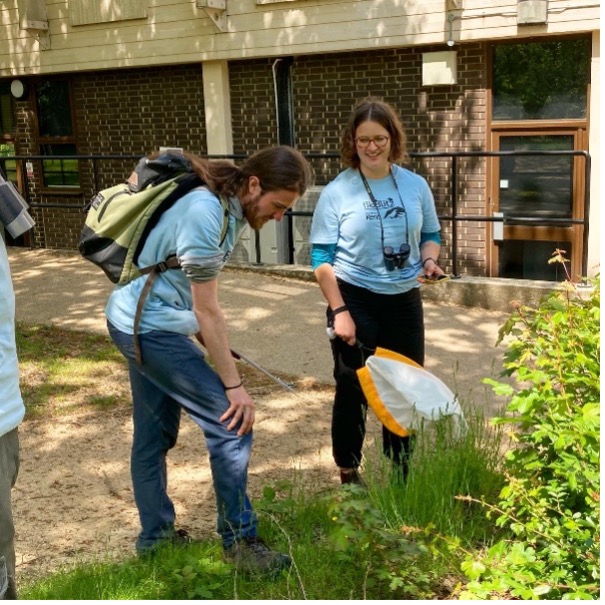
Who attended?
Whilst I had absolute faith in our abilities to deliver a fantastic day, there was still that underlying doubt about a small turnout. 238 survey participants later and my anxiety was completely blown out of the water! We had a huge mixture of attendees including staff and students from other Canterbury universities, family groups and older biodiversity enthusiasts. People had even travelled from as far as London which brought me such joy. The feedback was overwhelmingly positive with one participant exclaiming “we learnt so much and will definitely be back!”.
We also had great involvement online with more than 985 interactions and a total of 343 followers across our social media!
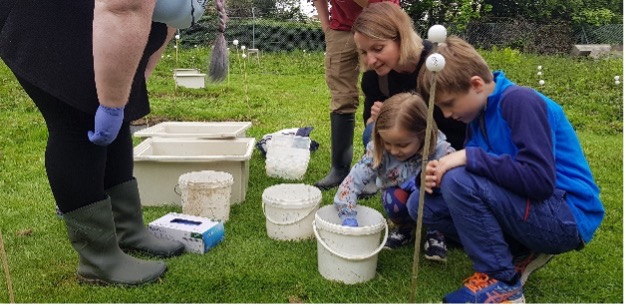
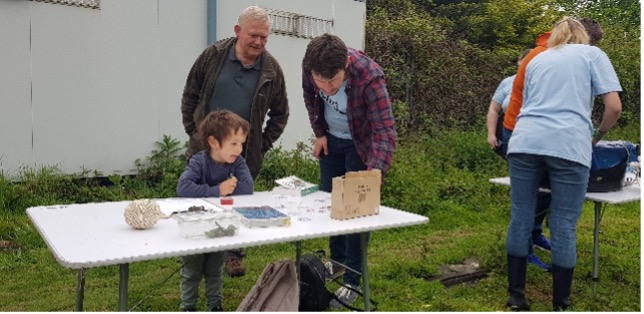
A BioBlitz survey expert (PhD student James Clarke) teaching a family about local moth species.
Thank you!
As one of the BioBlitz leaders, I saw first-hand the sheer extent of coordination and effort displayed by those involved in its organisation and delivery. With at least 30 hours of meetings and many more spent on communication design, volunteer recruitment and survey training, this event would not have been possible without the incredible collaboration between the SWG, students and staff in DICE, the Sustainability Team within Estates, the University Print and Design team and other Canterbury conservation charities.
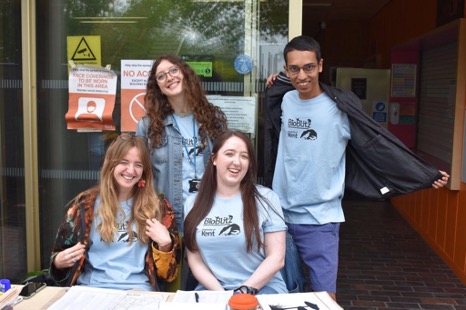
A special thanks to the following individuals who made this day possible:
The BioBlitz committee: Bob Smith, Emily Mason, Jess Fisher, Lois Mitchell, Jack Bedford, Javi Malebrán Muñoz, Katie Hargrave-Smith, Emily Rampling, James Bonthron
Survey experts: Rhianna Goble, Sicily Fiennes, Will Hayes, Charlie Gardner, Jake Bicknell, Nick Deere, Luis Santiago, Katie Bickerton, James Clarke, Adam Roberts, Katie Spencer, Janine Robinson, Gwili Gibbon, Kieran Richardson, Jacob Coles, St John Mullis, Devin Finaughty and Natalie Yoh
External organisations: The Kent and SE London Butterfly Conservation branch, Kent Wildlife Trust and Kent Moth Group
Keep an eye out for BioBlitz 2022!

